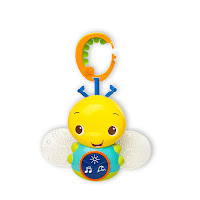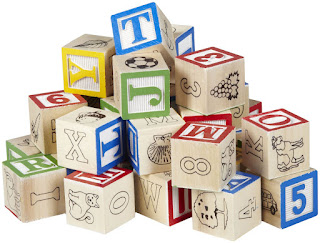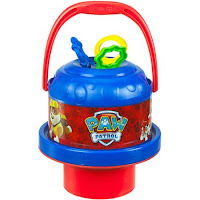Visually impaired children are typically delayed in the development of gross motor milestones—rolling, crawling, transitions (getting in and out of a position like sitting or pulling to standing), walking and running.
Our bodies are programed to move—most
infants are born wiggling and squiggling! Vision is an important motivator for continued
movement in infants and young children. Babies learn to move toward faces,
objects and toys they can see. They spy something they want and reach for
it. Then they learn to roll or crawl to
capture it.
When children can’t see the toy in
front of them, they don’t know to reach and grasp it. The most fascinating mobile spinning in a
crib, the cutest stuffed animal, or the most intriguing ball rolling across the
room will not motivate a child with little or no vision. Standing and walking can be extremely
challenging—who wants to venture into the unknown where each step is a
potential stumble and fall? Many children with low vision prefer stationary
(read, “Stagnant”!) positions because they have no reason to move or are afraid
of moving. This is the primary cause of most of their gross motor delays!
We’ve all heard it said that when
we lose one of our senses, our other body senses become more acute to help
compensate. Children diagnosed with low vision or classified as legally blind
often develop excellent hearing. Presenting
musical toys and toys that rattle or make noises will attract the attention of these
children.
Some toys have sounds and lights, which are good for children
who have some vision, as the changing lights and colors can often attract
attention.
An increased awareness of and
attention to tactile input can be encouraged by choosing textured books as well
as stuffed animals that make sounds.
Hard plastic books with music and toggles are well loved by all kids. Textured balls with bells or rattles inside are excellent choices.
Our O-Balls are easy to grasp and make noises
when children touch or grasp them. Traditional wooden blocks with raised
letters and numbers are an excellent way to teach children to explore and
improve the sensitivity of their fingers, preparing them for future braille
reading.
Textured, interlocking floor mats make a great place to play and encourage exploration. Another good choice is a shape sorter that makes noise when the piece is inserted.
Believe it or not, some children with low vision can see bubbles! The mother of one of my young visually impaired clients, herself also visually impaired, imparted this piece of information. Something about the iridescence of the bubble. I used bubbles with her son and with other clients with low vision and they were delighted and mesmerized, thus motivated to reach and move. Spill-resistant bubble containers are the greatest!
Tips from the Therapist:
·
How to
Present a New Toy. Sit with your
child on your lap or place them on their tummy and lay next to them on the
floor in close contact. Talk to them
about the new toy or book and place their hand on the item. Activate the toy or turn the pages of the
book and let them feel the texture on the pages. Place their fingers over the
on/off switch and each of the different buttons or toggles and assist them in
triggering the toy.
·
Encourage
Movement Toward a Toy. When your child shows interest in the toy, tell them
that you are going to put it in front of them.
Activate the toy and encourage your child to reach for the toy. If they
are unsuccessful the first time, help them perform a search pattern with their
hands until they hit upon the toy. If they are not yet crawling on their belly,
put your hand on the bottom of their feet and let them push against you to move
forward toward the toy. If they are able
to sit, vary the placement of the toy—out front, to the right, to the left;
turn the music on and let the child reach in each direction to secure the toy
and, in the process, learn how to weight shift and balance in sitting. This is the beginning of orienting to sound.
·
Make Play
Areas Safe and Consistent. Ensure
that your child’s play area is free from dangers like unstable furniture or
dangling cords. Don’t change the
configuration of the play space, as this can be confusing to children with low
or no vision. They will learn that they can roll consecutively 4 times before
they bump into the couch. This is especially true when learning to walk. Children should be encouraged to cruise
around furniture repetitively, learning where each piece ends and how far away
the next piece is.
There are many wonderful resources available to families of
children with vision difficulties. I
recommend checking out your local community or county as well as visiting the American Foundation for the Blind. The information at Family
Connect can be helpful to parents as well. Connect with other parents struggling through the same issues.
Author: Trisha
Roberts
www.proeducationaltoys.com
Copyright © 2016 TNT Inspired Enterprise, LLC, All rights reserved.
Unauthorized duplication is a violation of applicable laws.










Great suggestions for visually impaired kids!
ReplyDeleteGreat products for visually impaired children! They can learn easily with these toys. Thanks for this list.
ReplyDeleteToys for kids